The Basics of Fertilizing Your Plants
It pays to know why, what, how, and when to feed your plants
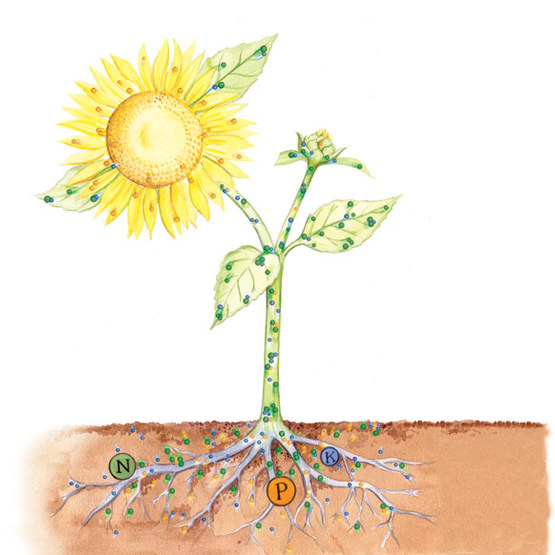
No matter how hard one tries, it’s tough to transform the topic of fertilizers into lively conversation. But for all gardeners, knowledge of fertilizers and how to apply them effectively is as crucial to vigorous plant growth as knowing a plant’s hardiness zones. So in the interest of growing healthy plants, what follows is a brief discussion of the why, what, how, and when of applying these multivitamins.
Three prime chemical elements are found in all mixed fertilizers
- N = Nitrogen promotes healthy leaf growth by stimulating the production of chlorophyll (the main chemical involved in photosynthesis—how plants convert sunlight to food).
- P = Phosphorus supports the vigorous development of roots, stems, blossoms, and fruits.
- K = Potassium plays a key role in helping plants digest and manufacture their foods.
Why plants need fertilizers
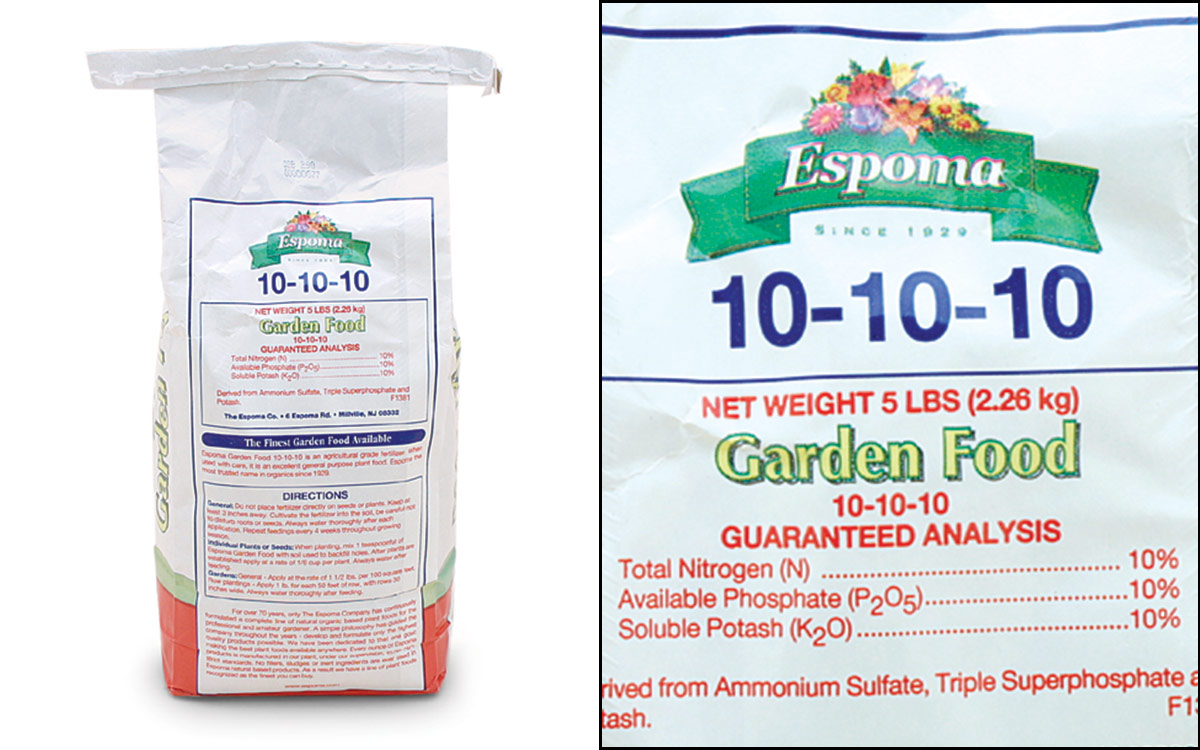
All of the nutrients essential to plant growth are present in the soil or are floating in the air, so what’s the point of fertilizing? The point is that not all plants can access the key nutrients found in the soil or in the air. Each soil type has its own mix of nutritional ingredients, so before considering what fertilizers a plant may require, we need to consider the soil in which a plant is growing. Activities like intensive farming, construction, and traffic can alter soil chemistry and structure, limiting the nutrients that plants can use. In some cases, the nutrients aren’t naturally there to begin with or have been leached out over time. For these reasons, we, the diggers of the dirt and keepers of the garden, must replenish, replace, or help release those elements that are beyond the reach of our plants.
When it comes to fertilizing, more does not mean better. It is possible to overfeed your plants. Too much fertilizer can damage and maybe even kill your plants. Before applying any fertilizer, it’s a good idea to have your soil tested so you can select the type and formula that suits your plants’ needs. In return, our plants will reward us with bigger flowers, bigger leaves, and bigger fruits and vegetables.
Long-term sustenance vs. fast food: Which is the right feeding choice for your situation?
1. Granular fertilizers deliver food to a plant slowly but have the advantage of longevity.
Broadcast application
This method, which covers large areas well, is used to apply granular fertilizers to lawns or to new beds before they are planted. The broadcast method can be done with a hand-rotary or drop spreader.
Top-dress application
This technique, which provides nutrients to individual plants such as shrubs and perennials, is done by hand with granular fertilizers. Simply apply the fertilizer around the base of the plant, extending to the drip line. For vegetables, place the fertilizer in a strip parallel to the planting row.
2. Water-soluble fertilizers are faster acting but must be applied more frequently.
Base application
This method gives plants food while you water. Use with water-soluble fertilizers, follow the mixing instructions, and water the soil at the plant’s base with a watering can or hose attachment. This is good for feeding container plants and vegetables.
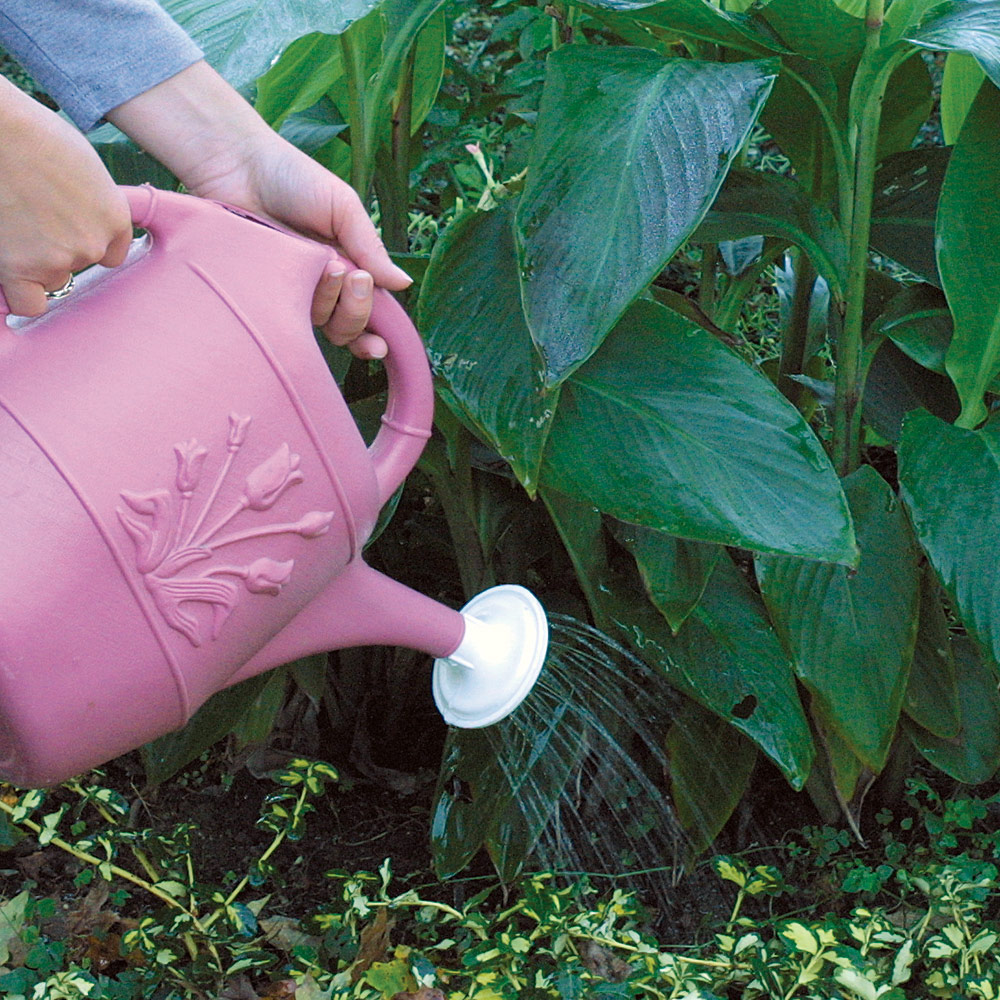 |
 |
Foliar application
This approach is similar to base application, but the water is applied to the leaves rather than to the soil. It is useful when plants need to quickly absorb trace elements, such as iron.
What plants need to thrive
The three essential elements that all plants need are nitrogen, phosphorus, and potassium—or N-P-K, the proportions of which are stated as numbers on the package. For instance, a general-purpose fertilizer labeled 20-20-20 means that each chemical element—N, P, and K—contributes 20 percent by weight to the total formula. (The remaining 40 percent is composed of inert materials and trace elements.) The element percentages are offered in various proportions to suit different fertilizer needs. If you are looking to boost flower production, you want a mix like 15-30-15, which is high in flower-developing phosphorus. If you want to green up your lawn, choose a mix like 25-6-4, which is high in nitrogen. Many fertilizers are formulated for specific plants like roses, bulbs, or vegetables. Be sure to check the label for the N-P-K ratio, as you may be able to use a general fertilizer with close to the same nutrient percentages but at a lower price.
In addition to N-P-K, most fertilizers contain traces of other elements important to plant health. Some trace elements are more important than others, but each nourishes a plant in its own way. The main trace elements in fertilizers are calcium, magnesium, iron, copper, manganese, zinc, molybdenum, boron, and sulfur. (You can usually purchase these items individually as well.) If any of these elements is lacking, a plant may show characteristic deficiency symptoms. An iron deficiency, for instance, causes chlorosis (yellow leaves with green veins), which is easily corrected with a dose of chelated iron.
There are quite a number of fertilizers available today, both organic (plant and animal derived) and inorganic (chemically derived). While most are commercially produced inorganic fertilizers, there are a few options for the organic gardener. Many rely on the old standbys—animal manure and compost—which, although organic and good for soil building, actually contain few nutrients. For flower and fruit development, bonemeal with a high phosphorus count is the organic of choice, while blood meal is a good source of nitrogen.
How to choose a fertilizer
There are two types of fertilizers available to the home gardener: granular and water soluble. Each type has advantages and disadvantages. Granular fertilizers deliver food to a plant slowly but have the advantage of longevity. Since they must be broken down by water before a plant can use them, granular fertilizers do not leach out of the soil as rapidly as water-soluble types. Water-soluble fertilizers are faster acting but more transient, which means they must be applied more frequently than the granular type.
Both types of fertilizers are effective, so the one you choose depends on whether you want to give your plants a quick but frequent fix or a sluggish but extended feeding. And for those of us gardeners who are oh so very busy (or oh so very lazy), nothing beats time-release granular fertilizers, some of which require only one application every six to nine months.
You can apply granular and water-soluble fertilizers in several ways, but be sure to follow a few general guidelines when doing so:
- Avoid applying a fertilizer on windy or rainy days. This can cause it to be misplaced and ineffective.
- When using a granular fertilizer, always be sure to knock the fertilizer off plant leaves to avoid burn.
- Never apply a granular fertilizer when the soil is extremely dry, and water it in thoroughly after applying to prevent plant burn.
When to fertilize
Knowing when to fertilize is as important as using the right fertilizer. If you don’t apply the fertilizer at a time when the plant can use it, there’s no point in fertilizing. Most perennials, annuals, vegetables, and lawns will reward you handsomely if you feed them with a balanced granular fertilizer in early spring. Avoid fertilizing before the spring showers, however, or you will be throwing your money away, since the nutrients will simply leach out of the soil. Annuals like to be fed an additional three to four times during the growing season with a high-phosphorus, water-soluble fertilizer, while lawns benefit from a second granular application in early fall.
Trees and shrubs, especially those that flower, also like a dose of a balanced granular fertilizer in the spring and another in the fall. But remember to heed the phrase “late and light” when fertilizing trees and shrubs in autumn. Late fall is also a good time to fertilize bulbs, especially if you are planting them for the first time; a teaspoon of bonemeal added to each bulb hole will generally be sufficient.
Roses have insatiable appetites. To keep them fat and happy, feed them with a soluble fertilizer every seven days during their blooming season. “Weekly, weakly” is the feeding mantra for all roses. One final thought: Feed only well-established plants; fertilizing seeds or tiny seedlings will cause fertilizer burn.
Just remember, these guidelines on feeding are just that—guidelines. Read the package directions before scattering both food and caution to the wind.
Sandra Gorry is a horticulturalist and garden designer who lives in New York City.
All photos, except where noted: Jennifer Benner
Fine Gardening Recommended Products

A.M. Leonard Deluxe Soil Knife & Leather Sheath Combo
Fine Gardening receives a commission for items purchased through links on this site, including Amazon Associates and other affiliate advertising programs.


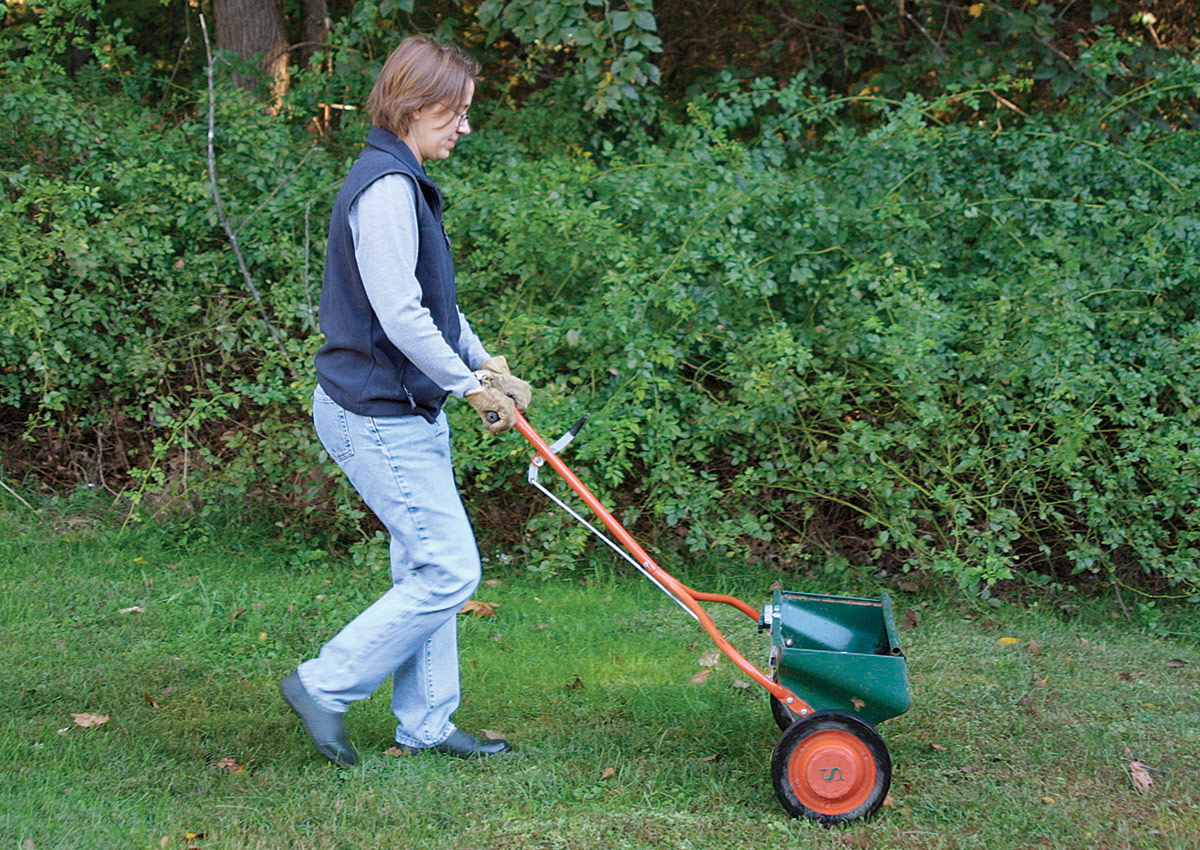
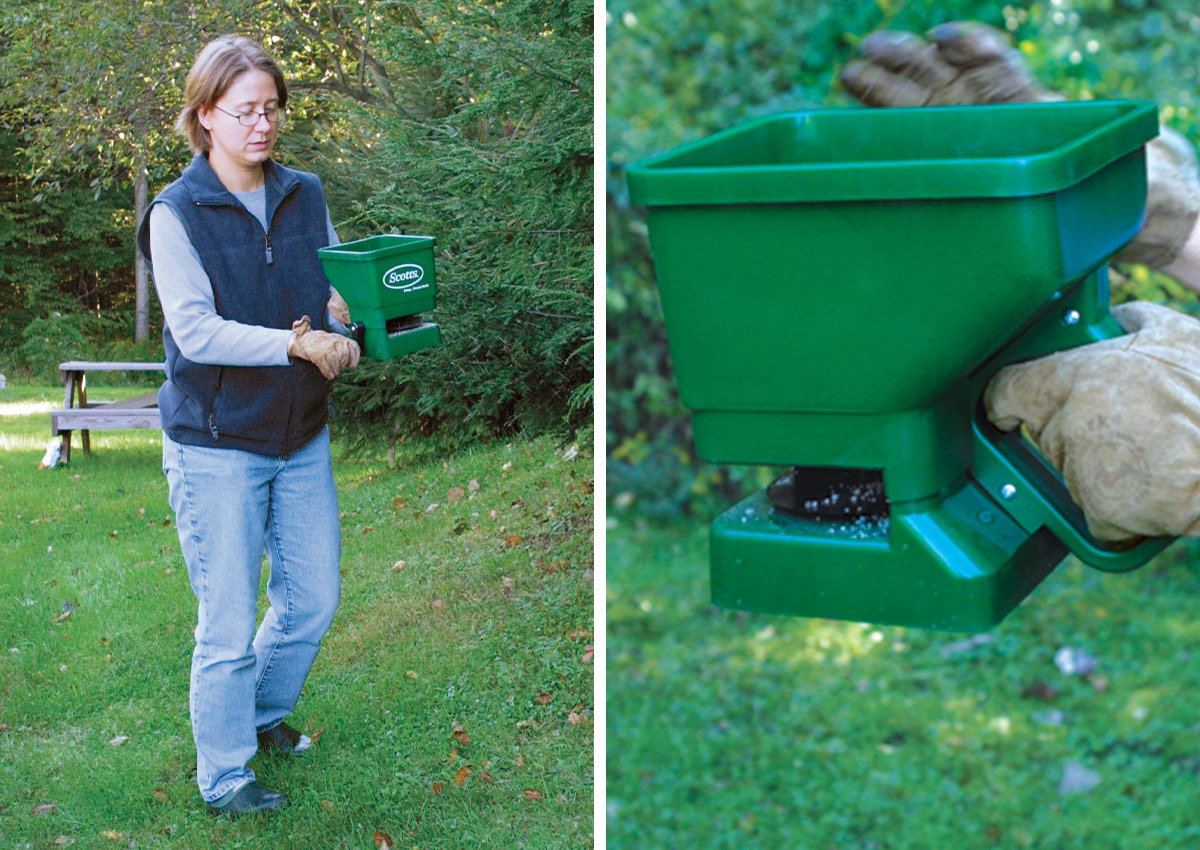
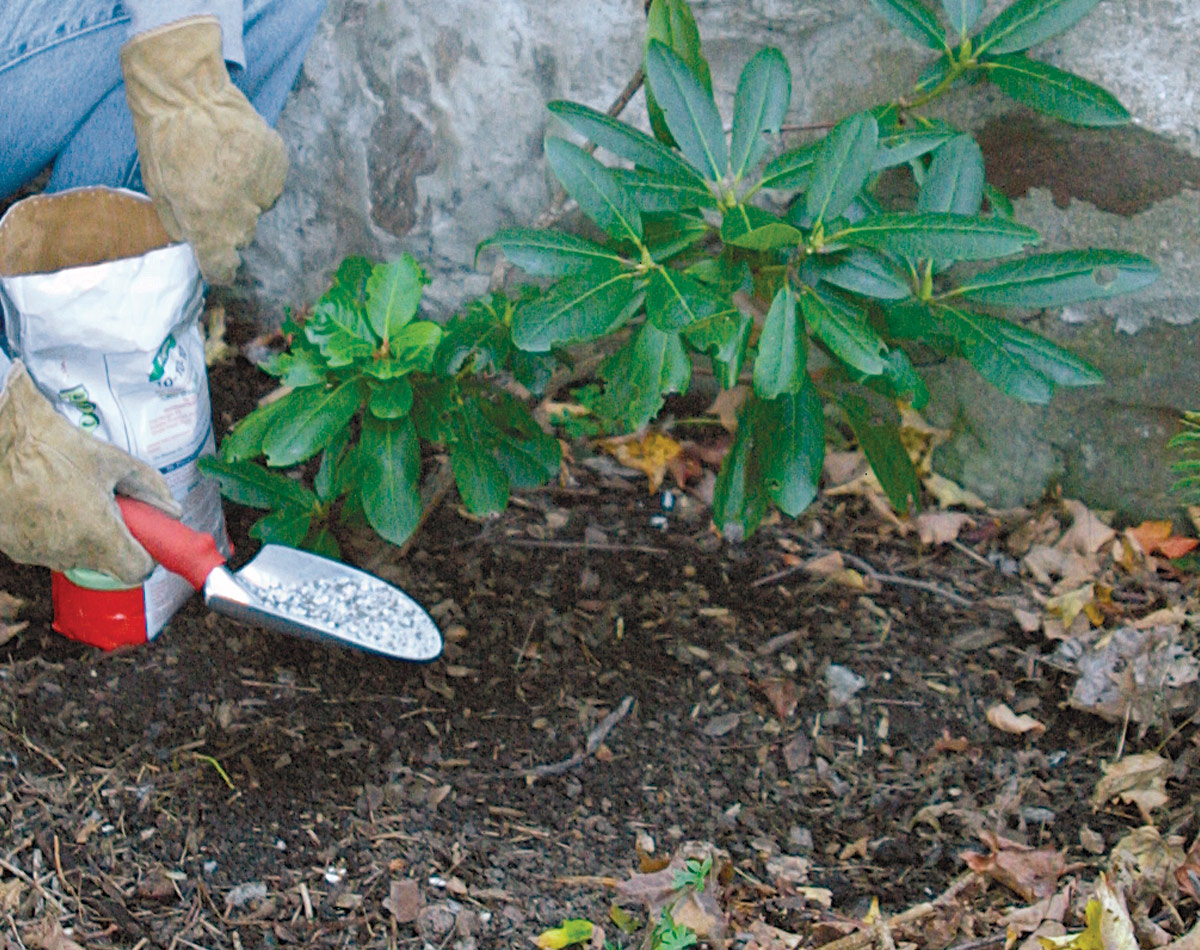




Comments
Awesome post! This was super informative. I don't know the first thing about lawn care or fertilization, but I want to learn more, and this post was a great place for me to start. So thank you for the helpful tips.
A funny article that I think would be interesting for you, and your other readers is one I stumbled across a few days ago. It's about why you should talk to your plants haha.
You can find it here: http://lawntechutah.com/lawn-care/when-and-why-do-i-need-fertilizer-for-my-lawn/
And again, thanks for such a great post! I loved it!
The way you have concepts basic concepts related to the Fertilizing Basics has increased my significant knowledge on this very interesting topic and I will write an essay on this with the help of edubirie I already read reviews about on top5writingservices.com/edubirdie-com-reviews website. Now I am mainly interested in knowing about the basics of Top-dress and broadcast applications.
I have a Question What kind of fertilizer is best for growing plants Why? it's for my Education purpose . Thanks
extraordinary article! I removed a great deal of helpful things for myself! Yet at the same time, when composing composed works, I generally allude to https://www.edugeeksclub.com/research-proposal/ - it saves my time and simultaneously I have an astounding GPA at the college
It is important to understand the difference between nitrogen in its natural state and how it is converted into a usable form by the plant's own processes. Plants use two different kinds of microbes, one that breaks down the nitrogen into ammonia (which is an odorless gas) and one that converts it into urea (which has no odor or taste). Nitrogen is abundant in many soils, so there are many ways to get it into your garden without using fertilizer!
Here are some tips on working with your soil:
• Soil pH: If you have a soil with an elevated pH (think alkaline), you should add limestone or manganese sulfate to bring the soil down to proper levels before fertilizing. This can be done safely by adding another nutrient source before or after you apply a fertilizer application such as fish emulsion, kelp meal or compost tea . Some people prefer a different solution altogether- use manure instead of compost tea .
• Organic matter: Adding organic matter such as leaves or compost will also lower your pH as long as you don't add too much material too quickly. If you want to increase your https://dentalsave.com/dentists/specialty/oral-surgeons/maryland/baltimore/ pH, try adding lime and/or gypsum instead of compost tea . However, if you want even more organic matter in your soil than this method allows, consider using biochar (carbon black) which is charcoal made from plant waste products - these can be added directly to your compost pile or added directly onto topsoil after being broken down by rainwater runoff . You might also want to consider adding something like worm castings , which will provide a good boost in organic matter without requiring any additional inputs - this can come from either
Log in or create an account to post a comment.
Sign up Log in